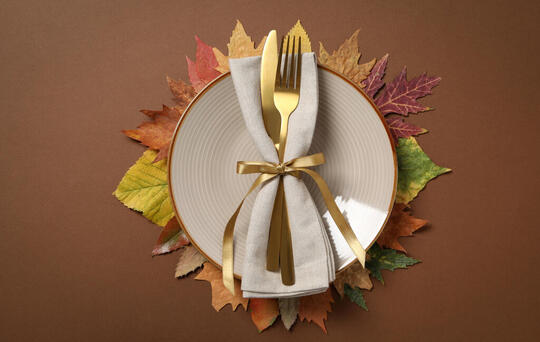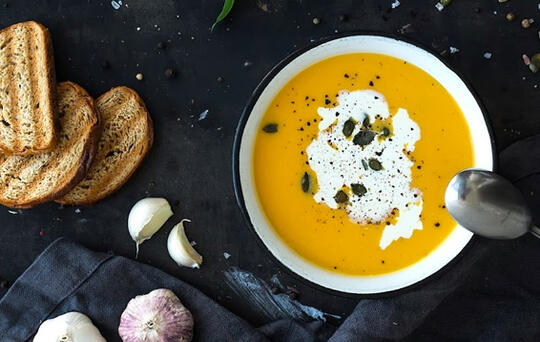9 neuromarketing tricks for your restaurant’s menu

Have you ever asked yourself why your customers decide on one dish over another when they see your menu? Although there are several influencing factors, one of the biggest ones is the way in which a dish is presented on the menu. This is where neuromarketing comes in, an effective tool in restaurant marketing that enables us to direct customers’ attention towards the products that we are most interested in having them try so that their experience is improved and we guarantee our sales.
It is about a technique that enables us to understand the mental, emotional and memory processes that are happening at the time of purchase for the customers, with the objective of guiding their buying decisions towards more satisfactory experiences, and also increasing the profits of the business.
This time we are giving you some of the best neuromarketing tricks applied to one of restaurants’ key tools: the menu. Try them all!
The weight of the menu
The weight of the menu counts! If the customer has a menu of a certain weight in their hands, they will have the feeling of being in a more exclusive establishment than if their menu was a simple sheet of paper. But be careful; it should not be a heavy menu either or one that is difficult to handle, but it should be stiff enough to hold itself up when in your hands.
The font type
Choosing a good font for our menu is also important. On one hand, it should be a font that is completely legible, since it is pointless to use a very elaborate or creative font if it cannot be read. On the other hand, it should be a font that instils security and confidence. Using Comic Sans could give a negative impression and come across as too informal, for example. For sweeter dishes, rounded fonts work better, while angular fonts work better for savoury or tart dishes. And if you want to draw attention to some text, cursive fonts achieve this effect.
The names of the dishes
Another characteristic of a tempting menu is that its dishes have attractive and descriptive names. Reading “Mixed salad” does not convey the same message as “Bowl of garden tomatoes, tender asparagus and flowers”, just like “Pasta carbonara” is not on the same level as “Creamy pasta with bacon and mushrooms” and “hamburger with cheese” is nowhere near “hamburger with gruyere cheese and caramelised onions”. We can also be more creative and go a step further with names like “Viva México” for a recipe from that country or “Molten chocolate dream” for a chocolate fondant.
The descriptions
In line with the previous point, descriptions can also make customers salivate when they read them and that is the idea! Using words that stimulate the senses, like creamy, aromatic, colourful, crunchy, au jus, will help customers to decide on these products, as well as using shorter words whose sounds will be stimulating. It also works to write as much detail as possible about the dishes, so that the customer imagines them and feels tempted to try them. Even describing the mini history of the dishes could go down really well (for example, “this dish emerged from …) since the emotional aspect will come into play, increasing interest in the dish.
The aesthetic
If the dishes we are interested in selling not only have original names and succulent descriptions but are also accompanied by good pictures, the effect will be excellent, since it has been shown in neuromarketing that customers prefer pictures. And if the entire menu also has a balanced aesthetic that is in line with the brand’s graphics, voilà!
The colours
In restaurant marketing, colours are vital. They have different psychological effects, since the brain associates them with different sensations, which is why it is very important to know how to use them in accordance with our objectives. If we want to sell a dish as being fresh and healthy, green could be the right colour for presenting it in terms of text, icons, backgrounds, etc. If we want to quickly spark the customer’s hunger, orange is the best colour. The opposite is true of blue, which is an appetite suppressant.
The origin of the products
Another trick that helps to give dishes a more exclusive air and make them sell better is to include the origin of the ingredients, since the customer will have more information about them and will take them to be of better quality. This trick is ideal for using on the menus of organic restaurants, for instance, where the origin of the products is a fundamental piece of information for the customer.
The prices
An error that is usually present in the menus of many restaurants is having the prices of the dishes aligned in a column. This leads the customer to do a quick scan to detect the lowest prices and decide on those dishes. It is a mechanism in our brain that leads us to believe that if we spend less, we are safer. It is therefore better to have the prices out of alignment and in whole numbers without decimals, so that the customer can read them faster. There is also the well-known trick of lowering the price by a cent so that it appears cheaper.
The placement
If the customer quickly finds the dishes he or she always asks for on the menu, he or she will have extra time to explore the rest of the menu and find new products. It is strategic, therefore, to make the most-requested dishes highly visible and to place the other dishes that you would also like to sell near these dishes. Let’s say that this way we can cause the customer to be attracted by new flavours and change their usual buying decision. It is also interesting to take cross-selling into account when placing dishes on the menu.
Another article that could help you to determine the most profitable dishes for your menu and place them correctly is: How to increase sales with menu engineering;
There are restaurants that study their new menus for months, testing them with tricks like these until reaching the perfect menu for their objectives. With TheFork Manager, our management software, you can record your customers’ preferences over a period of time and later use this information to test your menus. Click here if you do not have this tool yet and would like to try it.
Is all of this effort on restaurant marketing actions worth it? Absolutely! Especially when we realise that a restaurant is one of the businesses where we most have to take into account the emotions and consumer patterns of the customers.














